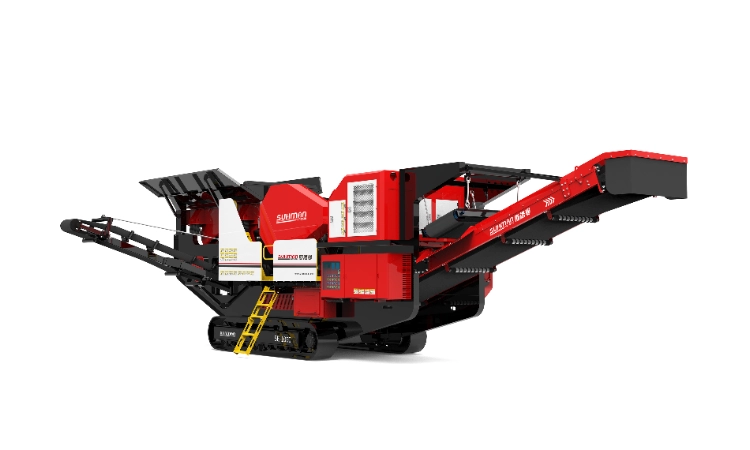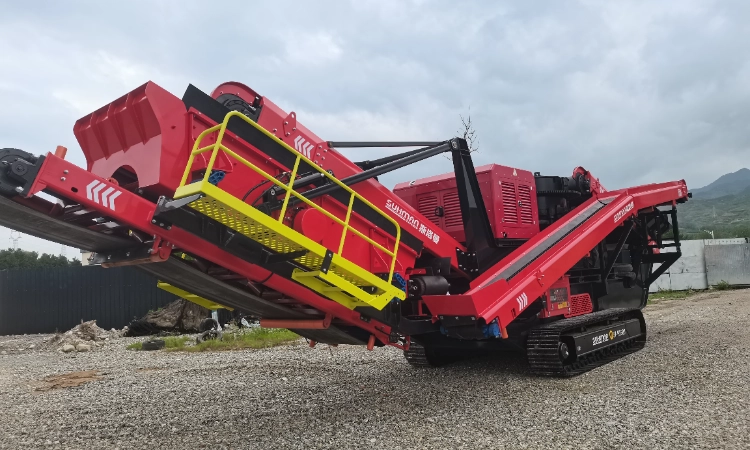Limestone Crusher for Efficient Limestone Crushing Plant
Release time: 2025-03-01
Limestone crushing is a vital process in industries such as construction, manufacturing, and agriculture, where large limestone rocks are reduced into smaller, manageable sizes for further use. A limestone crusher is a specialized machine designed to achieve this, transforming raw limestone into particles, gravel, or dust. An efficient limestone crushing plant relies on the right crusher selection, proper operation, and optimization strategies to maximize productivity, minimize costs, and ensure high-quality output. This response explores the role of limestone crushers, their types, and how to optimize them for an efficient crushing plant.

The Importance of Limestone Crushers
Limestone, a sedimentary rock primarily composed of calcite (calcium carbonate, CaCO₃), is extracted from quarries in large blocks that are impractical for direct use. Limestone crushers address this by:
- Reducing Size: Breaking down large rocks into smaller, usable pieces.
- Preparing Material: Enabling further processing, such as grinding for cement production.
- Enhancing Efficiency: Lowering energy use and equipment wear, which reduces operational costs.
- Providing Versatility: Producing various particle sizes to meet diverse application needs.
Efficient crushing ensures maximum yield from raw limestone, consistent particle sizes for specific uses (e.g., uniform aggregates for concrete), and reduced environmental impact through optimized resource use.
Types of Limestone Crushers
Different crushers are suited to various stages of the crushing process—primary, secondary, or tertiary—depending on the input size and desired output. Here are the main types used in limestone crushing:
1. Jaw Crushers
- Role: Primary crushing.
- How It Works: Applies compressive force between a fixed and moving jaw to break large rocks.
- Advantages: Simple design, reliable operation, and easy maintenance.
- Use Case: Ideal for initial reduction of large limestone blocks (e.g., from 1 meter to 150 mm).
2. Impact Crushers
- Role: Secondary or tertiary crushing.
- How It Works: Uses high-speed impact force to shatter material against plates or bars.
- Advantages: Produces uniform, cubic particles suitable for high-quality aggregates.
- Use Case: Effective for finer crushing and shaping after primary reduction.
3. Cone Crushers
- Role: Secondary or tertiary crushing.
- How It Works: Compresses material between a rotating mantle and a stationary bowl liner.
- Advantages: High efficiency, low operating costs, and consistent particle shape.
- Use Case: Commonly used to produce fine aggregates (e.g., less than 50 mm).
4. Hammer Crushers
- Role: Primary or secondary crushing.
- How It Works: Employs high-speed rotating hammers to smash limestone.
- Advantages: High reduction ratio and adjustable output size.
- Use Case: Suitable for medium-hardness limestone with flexible size needs.
5. Vertical Shaft Impact (VSI) Crushers
- Role: Tertiary crushing.
- How It Works: Uses a high-speed rotor to throw material against anvils, creating fine particles.
- Advantages: Excellent particle shape and fine output.
- Use Case: Perfect for producing manufactured sand or very fine limestone (e.g., less than 20 mm).
Optimizing the Limestone Crushing Process
To ensure an efficient limestone crushing plant, operators must focus on crusher selection, operation, and maintenance. Below are key strategies:
1. Choose the Right Crusher
- Match the crusher to the limestone’s hardness, abrasiveness, and feed size, as well as the target output size.
- Example: Use a jaw crusher for large rocks and a VSI for fine sand production.
2. Control the Feed
- Maintain a consistent, regulated feed rate using feeders to prevent overloading and ensure smooth operation.
3. Adjust Crusher Settings
- Fine-tune settings (e.g., jaw crusher’s closed-side setting) to control particle size and optimize throughput.
- Regularly monitor and adjust to maintain performance.
4. Prioritize Maintenance
- Conduct routine inspections and replace worn parts (e.g., jaws, hammers) to avoid breakdowns and sustain efficiency.
- Proactive maintenance extends equipment lifespan and reduces downtime.
5. Incorporate Screening
- Use screens to sort crushed limestone by size, recirculating oversized pieces for further crushing.
- This ensures consistent output and reduces waste.
6. Manage Dust
- Install dust suppression systems (e.g., water sprays) to improve safety, comply with regulations, and protect equipment.
7. Boost Energy Efficiency
- Select energy-efficient crushers and motors, and design the crushing circuit to minimize power usage.
Example: An Efficient Limestone Crushing Plant
Imagine a plant producing construction aggregates:
- Primary Stage: A jaw crusher reduces limestone boulders (up to 1 meter) to 150 mm.
- Secondary Stage: A cone crusher processes this into 50 mm particles.
- Tertiary Stage: A VSI crusher refines it to 20 mm or less, with excellent shape for concrete use.
This multi-stage setup, with properly selected and maintained crushers, achieves high output quality, low energy consumption, and cost-effective operation.

Conclusion
A limestone crusher is the cornerstone of an efficient limestone crushing plant, enabling the transformation of raw limestone into valuable products for construction, agriculture, and manufacturing. By selecting the appropriate crusher type—jaw, impact, cone, hammer, or VSI—and optimizing the process through proper feeding, settings, maintenance, and screening, operators can maximize productivity, reduce costs, and ensure consistent, high-quality output. An efficient crushing plant not only boosts profitability but also supports sustainable operations by minimizing waste and energy use.



